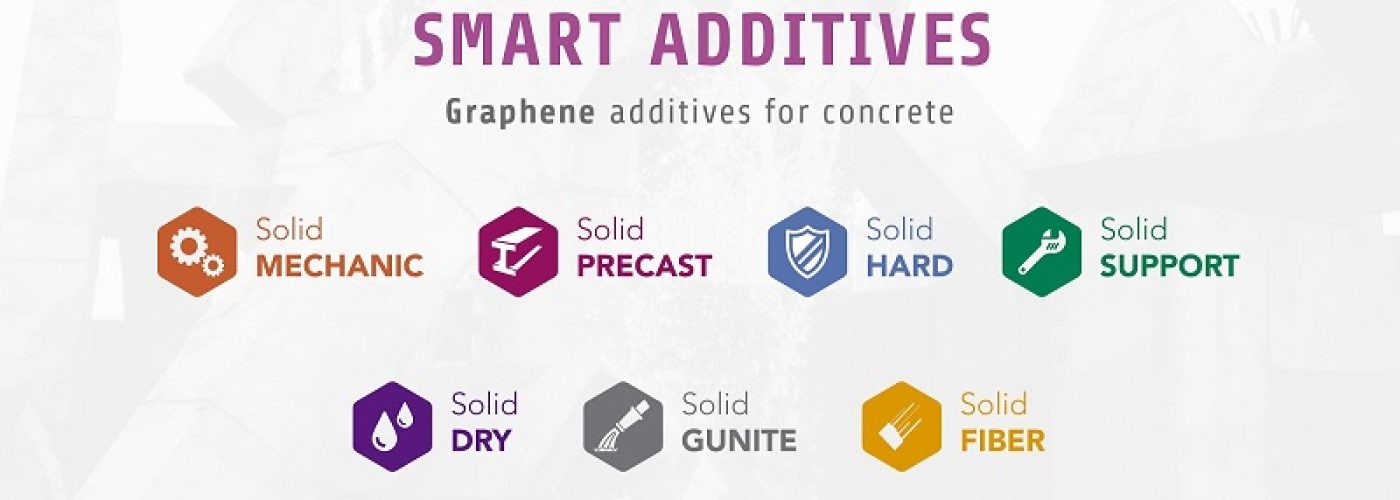Graphenano Smart Materials has launched its line of the latest generation concrete additives called Smart Additives. The range is the first in the world to incorporate graphene technology, enhancing its mechanical performances and increasing its service life, resulting in Concrete 2.0 and enabling more resistant and longer lasting constructions.
Smart Additives consists of seven ranges of additives, all depending on the concrete used and the properties required from it:
Solid MECHANIC, used in plant or in ready-made concretes. The result is high performance concretes, with increased quality, resistance and surface finish.
2. Solid PRECAST, which is ideal for the prefabricated world. These additives improve the production process and quality, lowering costs and raising concrete efficiency to the maximum.
3. Solid HARD, which is the best solution for concretes exposed to extremely aggressive environments. The result is a highly durable concrete with low permeability.
4. Solid SUPPORT range, which includes supplements to adjust and modify the Smart Additives product lines.
5. Solid DRY, suitable for manufacturing semi-fry concretes.
6. Solid GUNITE, especially designed for shotcrete production.
7. Solid FIBER, a line of fibres to replace or reduce rebar in wet concrete, which is also compatible with the entire Smart Additives range.
These Smart Additives products are now being used successfully in a number of projects both in Spain and abroad, in countries including Mexico, the United States and Morocco.
Graphene is ideal as a structural material in the concrete sector, as it acts as a molecular mesh, providing buildings with structural support. Graphene is a nanomaterial based on carbon that is stronger than steel and harder than diamonds, capable of bearing large loads and absorbing energy before it breaks. Constructions built using these concretes containing graphene additives can increase their service life by up to 50 years compared to those containing conventional materials.





